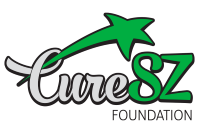
Richard Sanders, MD, Psychiatrist at Midwest Clinical Research, Dayton, Ohio
Neuromodulation Therapies for Schizophrenia
Of all the major psychiatric disorders (excluding dementia), schizophrenia is the one most thought of as a brain disorder. Alterations in brain anatomy, function and electrical activity have received more attention in schizophrenia than in any mood, anxiety and personality disorders. A common pattern in medical research is that emerging neuroscience technologies are quickly applied to the study of schizophrenia, often well before they are used to study other disorders. It is surprising, then, that neuromodulation treatments have not been more applied in schizophrenia.
When we speak of neuromodulation, it is not obvious what we mean. After all, many things influence (modulate) neurons. Neuromodulation refers to increasing or decreasing (modulating) brain function without using drugs or psychotherapy. Mostly this means increasing or decreasing (modulating) the overall activity of part of the brain by using energy. Many forms of energy are being investigated, but electrical and electromagnetic energy have been used the most.
Schizophrenia is treated primarily with antipsychotic drugs, which are beneficial but have limitations. For example, we have little control over where these medications act in the brain. In certain brain regions, antipsychotic drugs act to reduce symptoms, but in other regions they result in side effects. Most neuromodulation techniques can target specific regions of the brain, potentially bringing benefit without the problematic side effects caused by antipsychotic medications.
Almost 100 years ago, it was observed that some symptoms of mental illness improved after patients with epilepsy had seizures. Purposely inducing seizures also seemed to improve symptoms. After several years of trying various methods for inducing seizures, applying an alternating current to the side of the head emerged as the safest and most reliable method. Electroconvulsive therapy (ECT) is the first neuromodulation treatment that is still used today. It is highly effective in treating catatonia, depression and mania, though only occasionally is effective for the usual symptoms of schizophrenia. However, it may more be effective in schizophrenia when added to clozapine, when there is insufficient response to clozapine.
As soon as electricity was harnessed in the 1700’s, physicians and others attempted to treat illness and enhance well-being by applying electric current. Although these practices were widespread in the 1800’s, by the mid-1900’s most electricity-based treatments were considered ineffective. However, newer studies show that simple electric stimulation can in fact treat psychiatric illness and enhance function. The most popular approach is transcortical direct current stimulation (tDCS). Direct current is applied to the skull using two electrodes, increasing activity in the brain region under one electrode and decreasing activity in the brain region under the other electrode. The technology is simple, devices are sold for $100-200, and no prescription is needed to get a device. See below for potential uses in schizophrenia.
Electric stimulation of the brain is inefficient, in that most of the energy is diverted by scalp and skull, so only some of the energy makes it to the brain. Magnetic energy can affect brain tissue in the same way as electricity, but that energy is not diminished by passing through the patient’s scalp and skull. Magnetic stimuli can be used to induce seizures (magnetic seizure therapy might eventually replace electroconvulsive therapy), but magnetic energy is mostly used to modulate the activity of particular brain regions. This is transcranial magnetic stimulation (TMS). TMS is FDA-approved for treating major depressive disorder and obsessive-compulsive disorder, but has no current FDA approved indications in schizophrenia. However, studies so far suggest that TMS may help with several aspects of schizophrenia, as described below.
Rather than transmitting directly to the surface of the brain, electric stimuli can also modulate brain activity by stimulating cranial nerves. For example, when peripheral branches of the vagus nerve (the tenth cranial nerve) and trigeminal nerve (the fifth cranial nerve) are stimulated, these impulses are carried by those nerves to the brain. The easiest way to do this is around the ear, where both the trigeminal and vagus have branches. Although there are reasons that vagal nerve stimulation might help in schizophrenia, there has been little research on cranial nerve stimulation in schizophrenia so far (Corsi-Zuelli et al 2017).
The ultimate in modulating specific brain areas is deep brain stimulation (DBS). Tiny electrodes are placed by neurosurgeons into very specific regions. This approach is most often used to treat the tremor of Parkinson’s disease, but it’s also used to treat other movement disorders and obsessive-compulsive disorder. Many studies in depression have produced variable results so far. There have been few attempts to treat schizophrenia with DBS (Corripio et al 2022). Where would we place the electrodes? There are many types of symptoms to treat in schizophrenia, each of which may involve very different parts of the brain. Now I will describe some results using neuromodulation to treat the specific symptoms seen in schizophrenia.
Auditory hallucinations, usually the perception of voices, are a major problem in schizophrenia. When hearing real or hallucinated voices, the superior temporal gyrus (Wernicke’s area) is activated. Thus, researchers attempted to treat auditory hallucinations by using tDCS to reduce activity in this brain region. Initial results were encouraging, but later studies have not shown consistent benefit.
Negative symptoms are often the most debilitating symptoms of schizophrenia. Negative symptoms are those features of human experience that are diminished in patients with schizophrenia. These include emotional experiences, motivation, non-verbal communication and social interest. Antipsychotic drugs are better at treating positive symptoms than negative symptoms, which is probably why researchers focus on negative symptoms with drug-free neuromodulation treatments. For example, an under-active dorsolateral prefrontal cortex is associated with negative symptoms and may be targets for neuromodulation treatments. So far, studies show that increasing activity in the left dorsolateral prefrontal cortex reduces negative symptoms. Both tDCS and TMS seem to bring this benefit (Tseng et al 2022).
Lack of insight isn’t a diagnostic criterion for schizophrenia, but it is very common and interferes with recovery. If you don’t believe that you are ill, you likely will not see the benefit of treatment. Looked at as a group, tDCS studies which activate the dorsolateral prefrontal cortex (or inhibit activity in temporoparietal cortex, as many of these studies did at the same time) may improve insight to some extent (Adam et al 2022). If this holds up in future studies, neuromodulation could help many people in achieving recovery from schizophrenia.
The desire to improve cognitive performance has driven many neuromodulation studies, almost all of them using tDCS. Small studies have found benefits in school-based learning, learning certain job-specific skills, and enhancing video game performance. People with schizophrenia tend to have problems with certain aspects of cognition; not usually severe enough to be obvious, but enough to interfere with functioning. Studies of schizophrenia and other brain disorders are only beginning, but there is evidence of some cognitive enhancement when tDCS is combined with cognitive training (Burton et al 2022).
Another common problem in schizophrenia is substance use, which aggravates many of the other symptoms of schizophrenia. The few studies looking at the use of TMS suggest that stimulating the left dorsolateral prefrontal cortex helps subjects crave less and use less (Johnstone et al 2022). There haven’t been enough studies using tDCS to test its efficacy in treating substance use disorders in schizophrenia.
Neuromodulation approaches for schizophrenia may provide promising future directions for treatment, but research has lagged behind the studies of neuromodulation for depression and anxiety disorders. So far, it seems that using TMS or tDCS to stimulate the left dorsolateral prefrontal cortex may help with negative symptoms, insight, cognition and drug use. Using neuromodulation to reduce activation in the superior temporal gyrus might help decrease auditory hallucinations. However, to make progress in the use of neuromodulation as a treatment for schizophrenia, the scientific and medical communities need to better understand exactly how brain function is different in schizophrenia. This enormous effort continues.
Adam, Ondine, et al. “Efficacy of Transcranial Direct Current Stimulation to Improve Insight in Patients With Schizophrenia: A Systematic Review and Meta-analysis of Randomized Controlled Trials.” Schizophrenia Bulletin 48.6 (2022): 1284-1294.
Burton, Cynthia Z., et al. “Combined Cognitive Training and Transcranial Direct Current Stimulation in Neuropsychiatric Disorders: A Systematic Review and Meta-Analysis.” Biological Psychiatry: Cognitive Neuroscience and Neuroimaging (2022).
Corripio, Iluminada, et al. “Target selection for deep brain stimulation in treatment resistant schizophrenia.” Progress in Neuro-Psychopharmacology and Biological Psychiatry 112 (2022): 110436.
Corsi-Zuelli, Fabiana Maria das Graças, et al. “Neuroimmune interactions in schizophrenia: focus on vagus nerve stimulation and activation of the alpha-7 nicotinic acetylcholine receptor.” Frontiers in immunology 8 (2017): 618.
Johnstone, Samantha, et al. “Neuromodulation to treat substance use disorders in people with schizophrenia and other psychoses: A systematic review.” Frontiers in psychiatry 13 (2022): 77.
Tseng, Ping-Tao, et al. “Assessment of noninvasive brain stimulation interventions for negative symptoms of schizophrenia: a systematic review and network meta-analysis.” JAMA psychiatry (2022).

